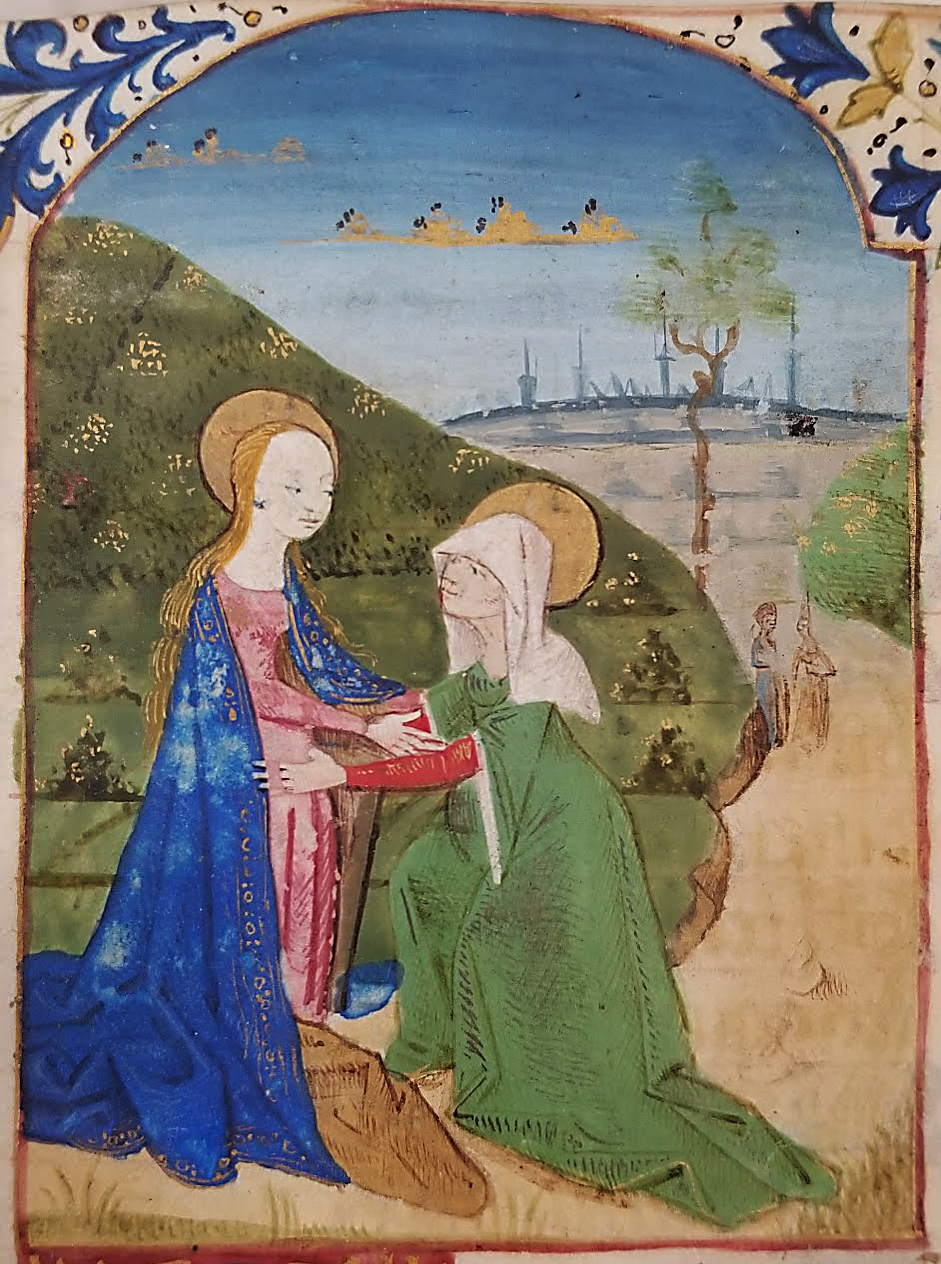Background on Book of hours

The visitation
Guillaume Claude Robinet, an avocat du roi from Issoudun (Indre), France, married Catherine Tabouet on Jan. 15, 1591.
Guillaume Claude Robinet, an avocat du roi from Issoudun (Indre), France, married Catherine Tabouet on Jan. 15, 1591.
A medieval book of hours of the use of Bourges, this manuscript is illuminated with six miniature paintings, each above a four-line initial and accompanied by an originally four-sided floral border (now trimmed at the top). The association of the manuscript with Robinet and Tabouet is based on the use of their names on the front and rear boards of the binding, which may have been commissioned at around the time of their wedding in 1591.
See similar SCUA collections:

The visitation
Guillaume Claude Robinet, an avocat du roi from Issoudun (Indre), France, married Catherine Tabouet on Jan. 15, 1591.
A medieval book of hours of the use of Bourges, this manuscript is illuminated with six miniature paintings, each above a four-line initial and accompanied by an originally four-sided floral border (now trimmed at the top). The association of the manuscript with Robinet and Tabouet is based on the use of their names on the front and rear boards of the binding, which may have been commissioned at around the time of their wedding in 1591.
Stylistically, the illuminations loosely resemble the work of the Master of Adelaide of Savoy (also known as the Master of Poitiers), who at different points in his career was active in Angers and Poitiers. It appears likely that the final illumination is by a different artist, given differences in style and palette, including the use of yellow and white or silver for clouds, rather than the gold used elsewhere. According to the cataloger of the manuscript, a connection with western France is further suggested by the virgins in the litany and by the surprisingly generic nature of the calendar, suggesting that the scribe did not have access to a Bourges-specific exemplar.
The subjects of the miniatures are:
Though later in date, the volume's binding is a notable and ornate late 16th-century French brown calf binding decorated with densely gilt panels and central oval cartouches on front and rear bearing the names of Robinet and Tabouet, respectively.
Measuring approximately 155x115mm., the manuscript on vellum is paginated sporadically 1-276 but jumping 2 between 201 and 211, foliated in the lower left corner every 5th leaf. It is collated: 112, 26-1 (1st leaf missing), 38-1 (1st leaf missing), 4-68, 78-1 (1st leaf missing), 88-1 (3rd leaf missing), 98-2 (3rd and 6th leaves missing), 108, 112, 128-1 (1st leaf missing), 138, 14-188, 196-1 (last blank cancelled), written with 15 lines.
The collection is open for research.
Acquired from Maggs Brothers, May 2019.
The binding suggests that the manuscript was bound near Issoudun in the late 16th century, with later provenance uncertain. The front fly is inscribed "Officia varia" in an indeterminate eighteenth century hand. The manuscript was sold previously at Sotheby's, June 28, 1921 (lot 426) as "property of a gentleman."
Processed by I. Eliot Wentworth, May 2019.
Cite as: Book of Hours (Use of Bourges) (MS 1077). Special Collections and University Archives, University of Massachusetts Amherst Libraries.